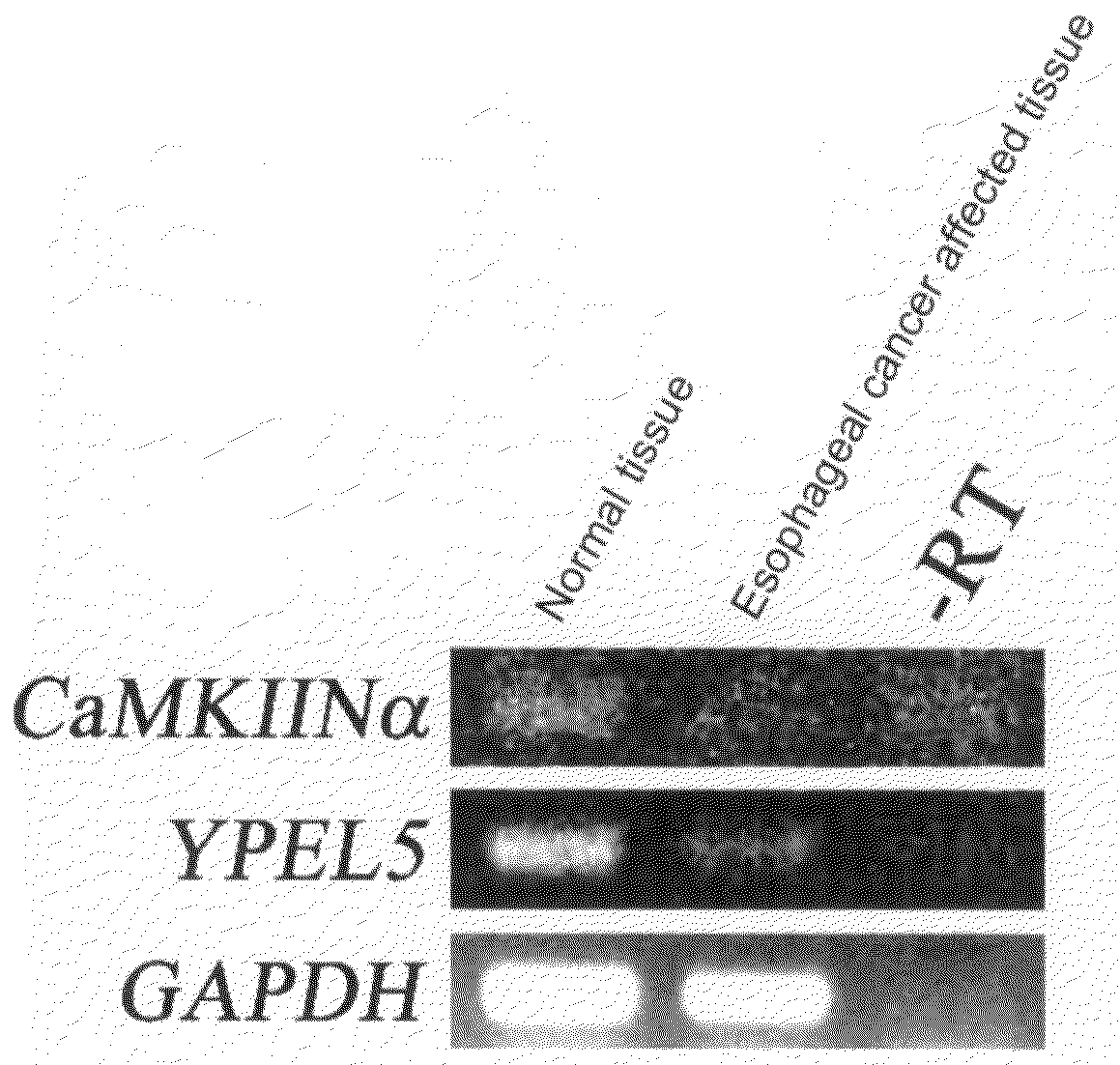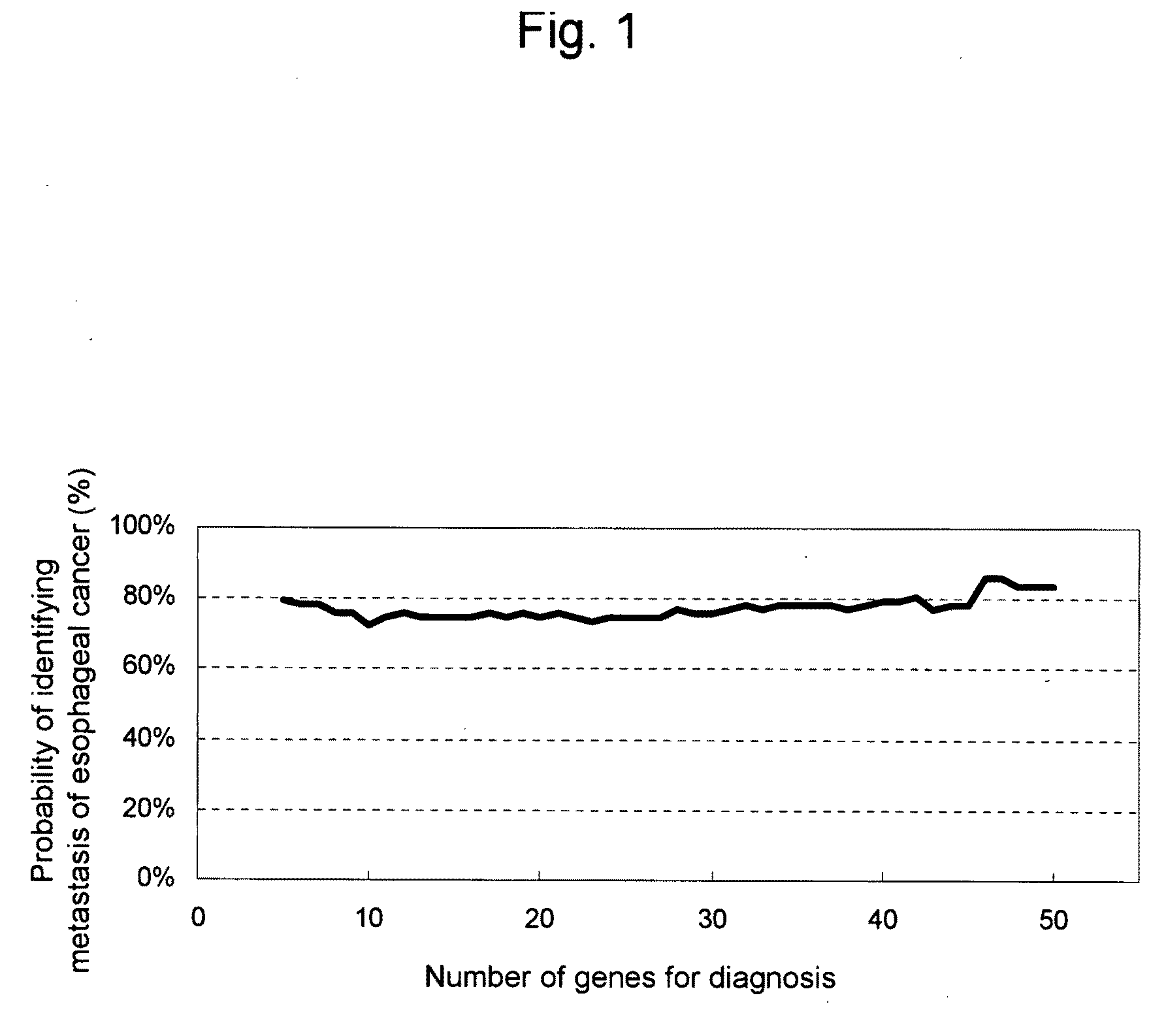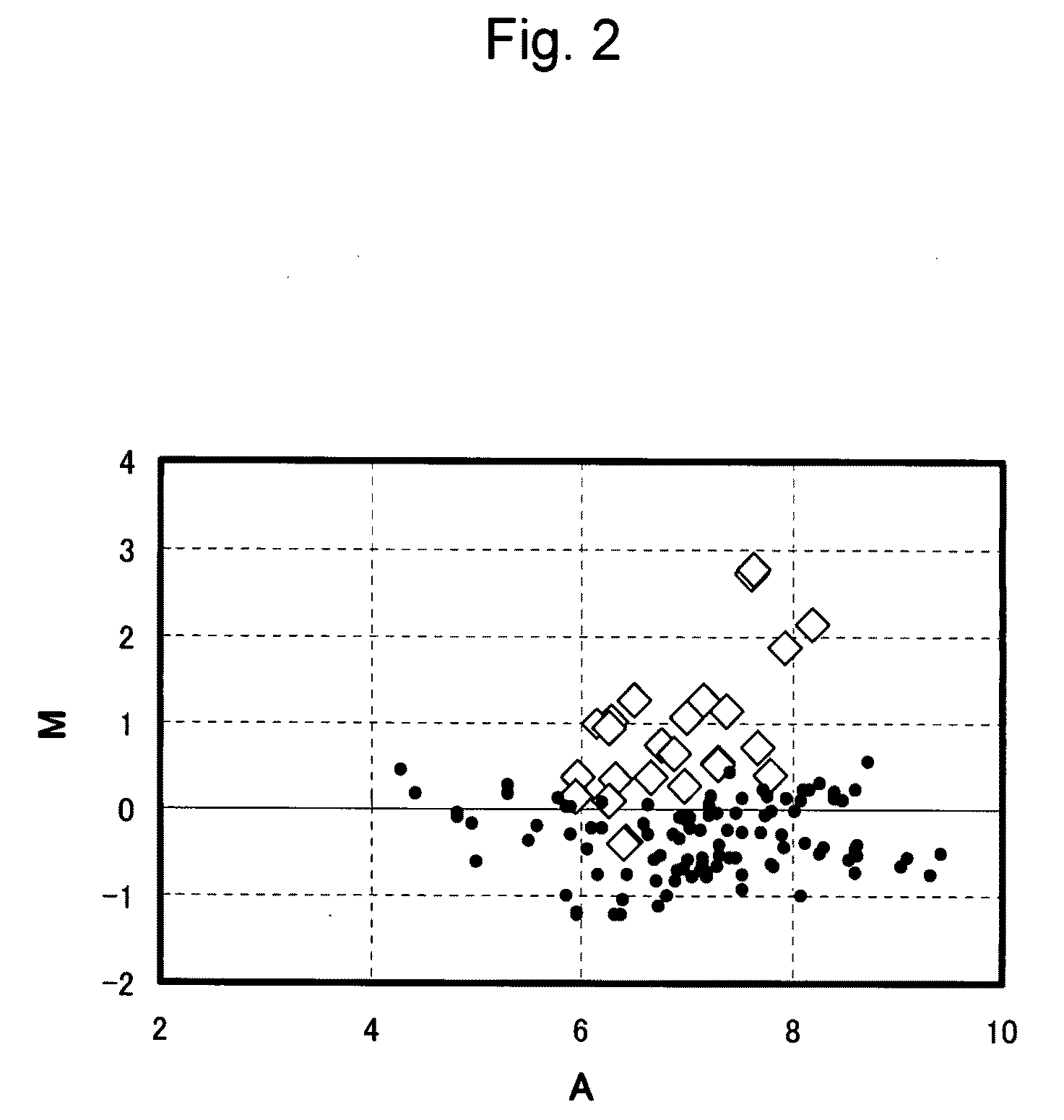Composition and method for diagnosing esophageal cancer and metastasis of esophageal cancer
- Summary
- Abstract
- Description
- Claims
- Application Information
AI Technical Summary
Benefits of technology
Problems solved by technology
Method used
Image
Examples
example 1
1. Clinical and Pathological Findings Concerning Subjects
[0635]Informed consent was obtained from 119 patients with esophageal cancer, and the esophagus tissues were excised from them at the time of the surgical excision of esophageal cancer or the esophageal biopsy. Part of the excised tissue was visually and / or histopathologically inspected to identify the esophageal cancer tissue, the esophageal cancer lesions were separated from the normal tissue, both of which were immediately freezed and stored in liquid nitrogen. Separately, the regional lymph nodes in the vicinity were removed from the excised tissue in order to pathologically diagnose the presence or absence of the metastasis of esophageal cancer cells.
2. Extraction of Total RNA and Preparation of cDNA
[0636]The tissue in the esophageal cancer lesion of the esophageal tissue obtained from an esophageal cancer patient was used as a sample. Total RNA was prepared from the tissue using a Trizol reagent (Invitrogen) in accordanc...
example 2
1. Clinical and Pathological Findings Concerning Subjects
[0646]Informed consent was obtained from 119 patients with esophageal cancer, and the esophagus tissues were excised from them at the time of the surgical excision of esophageal cancer or the esophageal biopsy. Part of the excised tissue slices was visually and / or histopathologically inspected to identify the esophageal cancer tissue, the esophageal cancer lesions were separated from the normal tissue, both of which were immediately freezed and stored in liquid nitrogen.
2. Extraction of Total RNA and Preparation of cDNA
[0647]The tissue in the esophageal cancer lesion of the esophageal tissue and the non-cancerous tissue (normal tissue) in the same esophageal tissue, which tissues had been obtained from a patient with esophageal cancer, were used as samples. Total RNA was prepared from the tissues using a Trizol reagent (Invitrogen) in accordance with the manufacturer's recommended protocol.
[0648]The thus obtained total RNA (1 ...
example 3
1. Detection by RT-PCR
[0661]The tissue of the esophageal cancer lesion in the esophageal tissue and the non-cancerous tissue (normal tissue) of the same esophageal tissue, which tissues were obtained from patients with esophageal cancer, were used as samples. Total RNA was prepared from the above tissues using a Trizol reagent (Invitrogen) in accordance with the manufacturer's recommended protocol. cDNA was synthesized from total RNA using the SuperScript III® First Strand SuperMix, and the cDNA corresponding to 20 ng total RNA was subjected to amplification using TaKaRa Taq® (Takara Bio, Kyoto, Japan). In order to detect the CaMKIINalpha and YPEL5 genes belonging to the group II above, primers (Takara Bio) each consisting of 20 nucleotides corresponding to the gene sequences (SEQ ID NOS: 145 and 158) were subjected to amplification. The composition of the reaction solution was determined in accordance with the provided protocol. The reaction was carried out by the treatment at 95° ...
PUM
 Login to View More
Login to View More Abstract
Description
Claims
Application Information
 Login to View More
Login to View More - R&D
- Intellectual Property
- Life Sciences
- Materials
- Tech Scout
- Unparalleled Data Quality
- Higher Quality Content
- 60% Fewer Hallucinations
Browse by: Latest US Patents, China's latest patents, Technical Efficacy Thesaurus, Application Domain, Technology Topic, Popular Technical Reports.
© 2025 PatSnap. All rights reserved.Legal|Privacy policy|Modern Slavery Act Transparency Statement|Sitemap|About US| Contact US: help@patsnap.com



